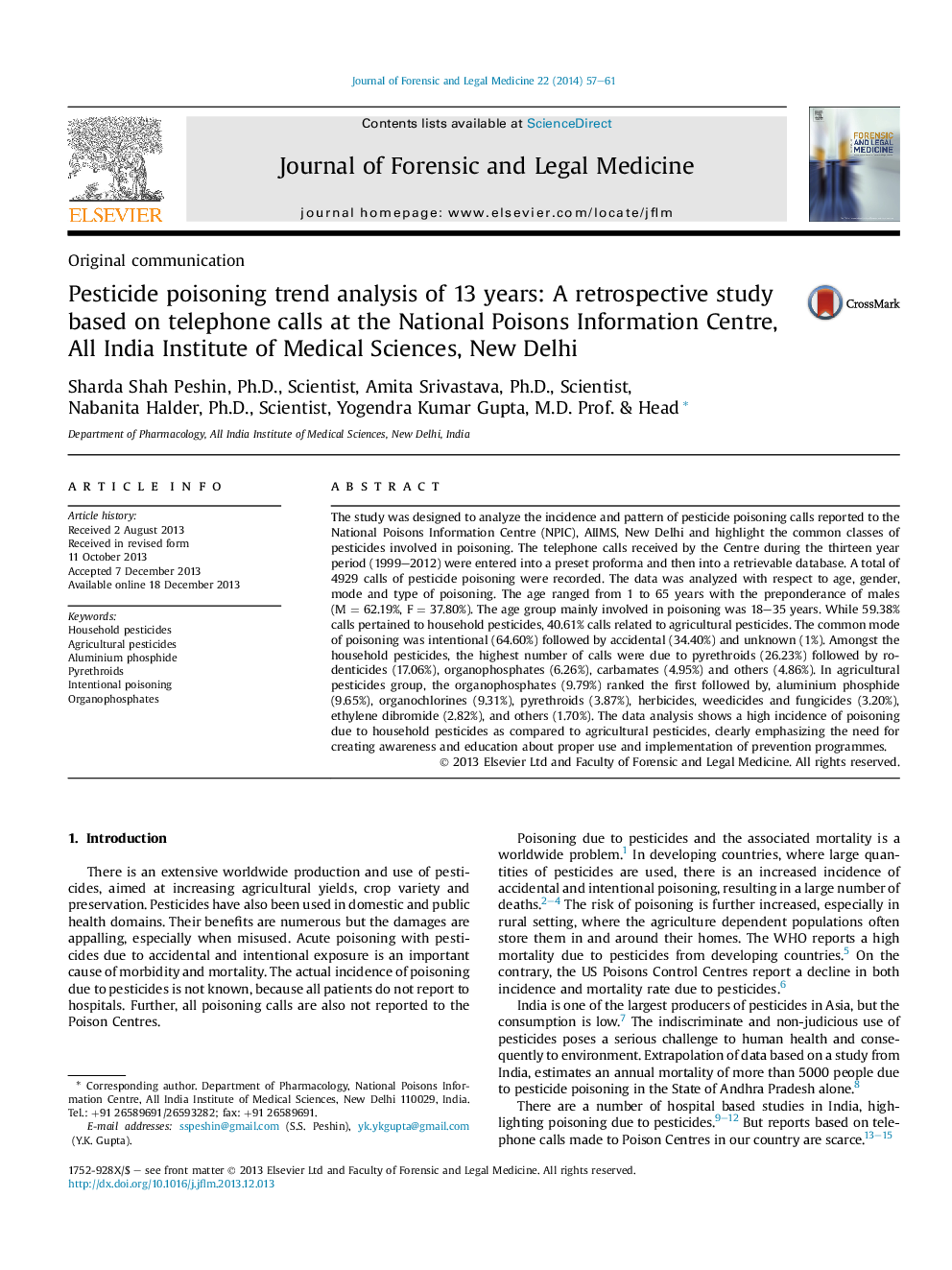| Article ID | Journal | Published Year | Pages | File Type |
|---|---|---|---|---|
| 102150 | Journal of Forensic and Legal Medicine | 2014 | 5 Pages |
The study was designed to analyze the incidence and pattern of pesticide poisoning calls reported to the National Poisons Information Centre (NPIC), AIIMS, New Delhi and highlight the common classes of pesticides involved in poisoning. The telephone calls received by the Centre during the thirteen year period (1999–2012) were entered into a preset proforma and then into a retrievable database. A total of 4929 calls of pesticide poisoning were recorded. The data was analyzed with respect to age, gender, mode and type of poisoning. The age ranged from 1 to 65 years with the preponderance of males (M = 62.19%, F = 37.80%). The age group mainly involved in poisoning was 18–35 years. While 59.38% calls pertained to household pesticides, 40.61% calls related to agricultural pesticides. The common mode of poisoning was intentional (64.60%) followed by accidental (34.40%) and unknown (1%). Amongst the household pesticides, the highest number of calls were due to pyrethroids (26.23%) followed by rodenticides (17.06%), organophosphates (6.26%), carbamates (4.95%) and others (4.86%). In agricultural pesticides group, the organophosphates (9.79%) ranked the first followed by, aluminium phosphide (9.65%), organochlorines (9.31%), pyrethroids (3.87%), herbicides, weedicides and fungicides (3.20%), ethylene dibromide (2.82%), and others (1.70%). The data analysis shows a high incidence of poisoning due to household pesticides as compared to agricultural pesticides, clearly emphasizing the need for creating awareness and education about proper use and implementation of prevention programmes.
